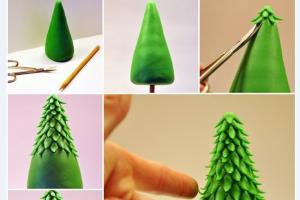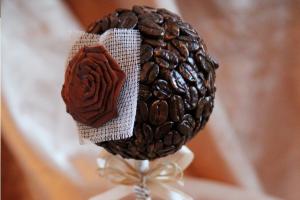Wooden floors will never go out of style. After all, such a finish looks natural and noble. In addition, wood is an environmentally friendly and natural product that does not emit harmful compounds. There are several options for decorating wood floors. You can choose parquet, or parquet board, But. Perhaps the most unusual appearance finishing is a tongue and groove board. What kind of material is this and what is it used for - read on.
The tongue and groove board is made of wood. Such an element has a centimeter-long groove on one side, and a tenon of the same length on the other. They got their name precisely because of the presence of such a locking system, because the groove is also called tongue and groove.
Sheet piling is a monolithic, seamless structure. Floors finished with this material will not begin to creak or fall apart over time.

Devices for tying boards (tenon and tongue) are made on a milling machine. Only if these two elements have the exact dimensions will the boards be firmly connected to each other.
The tongue and groove board can be made from different tree species. The material of such a product is selected depending on what it will be used for.
Types of tongue and groove boards:
- The cheapest option is pine tongue and groove boards. They are not very durable and are afraid of moisture, so they need to be opened with several layers of varnish.
- Larch tongue and groove is not afraid of moisture, but costs twice as much pine boards. This material is more durable and unattractive to insects.
- Oak and ash boards are the most expensive and beautiful material. Floors made from trees of such species look noble and aristocratic. The high cost is offset by strength and long service life.
At construction markets you can purchase tongue and groove boards of all existing species. First of all, when choosing a material, pay attention to its moisture content. The wooden floorboard should be saturated with liquid, no more than 10%.
There are standard sizes for tongue and groove boards. Their length can vary between 100 - 500 cm, thickness 2.5-3.5 cm, and width 8.5-10 cm.
Advantages and disadvantages of tongue and groove floor boards
Wooden tongue and groove boards have a lot of advantages. Of course, their features may vary depending on the type and type of wood from which they are made.

Advantages of tongue and groove boards:
- The tongue-and-groove fastener ensures even distribution of the load across the entire floor. This monolithic connection increases the service life of the floor covering.
- This type of boards is made in such a way that air can freely penetrate through the boards. This way, fungus and mold will not grow on the floor.
- Tongue and groove boards are an environmentally friendly material that meets all European quality standards.
- Increased thermal insulation and noise insulation are additional advantages of such boards.
- Installation of tongue and groove boards, thanks to the fastening system, is so simple that any beginner can handle it on their own.
- Seamless tongue-and-groove construction looks great in many interior styles. This coating will look especially good in loft-style rooms.
- In the event of superficial damage to a solid wood floor, it is easy to restore its attractive appearance. appearance, sanding it again and opening it with a new layer of varnish.
All these advantages make tongue-and-groove boards an excellent material for installation in a private home or judge’s apartment. However, this coating has some disadvantages that may influence your choice.
Disadvantages of tongue and groove boards:
- Wood is expensive natural material, so tongue-and-groove boards will cost more than most other flooring options. The price of such material will pay off over time due to its strength and long term services.
- A tongue and groove board is afraid of moisture, so periodically it will need to be coated with a new layer of varnish or an oil-wax mixture.
- The quality and service life of your flooring largely depends on the choice of wood species.
As you can see, there are not many disadvantages to this coating. If you are satisfied with the high price of tongue and groove boards, then you can safely purchase it.
Options for using tongue and groove floorboards
Due to their high price, tongue and groove boards are not used very often. However, apartments decorated with this noble material look very bright and original.

The first option for using tongue and groove boards is finishing a subfloor. In this case, you need to lay it on top of the boards. decorative coating. For laying on the subfloor, you can use solid pine boards; they are not damp and are cheaper than all other types of wood.
Tongue and groove boards look best in spacious rooms with ecological or laconic interior styles that prefer simple shapes. This finish will fit especially well into loft, modern and eco styles.
Another way to use tongue and groove boards is to finish the floor. This design move looks great in most interiors. To finish the front surface, boards made of larch, oak or ash are most often used. Such tree species are stronger, and they also look much more noble than pine materials.
Pine boards look harmonious in combination with wallpaper in muted colors. Also, if you want to make the flooring more original, you can treat it with stain of any color. This technique will provide the flooring with additional protection.
On what basis can a floor tongue be laid?
The tongue and groove board can be laid on almost any base. In order for such a coating to last as long as possible, the floor surface must be prepared. Make additional thermal insulation and waterproofing.

On what bases can you lay tongue-and-groove boards with your own hands:
- Tongue and groove boards can be laid on concrete base. If there are pronounced irregularities on such a surface, then it must be filled with a new layer of screed.
- You can also mount such a structure on logs. The logs are attached to the base with screws, dowels or glue.
- If you decide to use tongue and groove boards as the front finish, you can lay down plywood. The plywood is attached to the base with glue or self-tapping screws.
- An old wooden floor can also be covered with tongue and groove boards. The main thing is that all its elements are intact and firmly attached to the base.
Whatever base you use, you need to take care additional insulation floor. First, a waterproofing film is laid on the subfloor, then insulation, for example, glass wool, and the film is laid again as the last layer. Only after all the layers are in place can the tongue and groove board itself be used.
Laying a tongue and groove floor on a concrete base
First of all, in order to lay the boards on concrete, it is necessary to carry out some preparatory work. There are two ways to level the base: using a self-leveling screed or using a metal spatula and a cement-sand composition.
It is not necessary to use insulation under a tongue and groove board. However, using this upgrade, you will get a warm floor.

Next, you need to select insulation and waterproofing film. It is difficult to say which materials are better. One thing is clear, that ideal option considered natural insulation and durable polyethylene film. You can also use waterproofing primer.
Assembling a heated floor on a concrete base with your own hands:
- Plywood or chipboard is attached to the concrete base. The distance at which the plywood edge should be from the walls is 1.5 cm. I also leave a gap between the plywood sheets. It should be equal to 2 mm. To attach this layer, you will need self-tapping screws that are recessed into the wood.
- Find out the dimensions of the floor. Boards are cut along them; a special device is used for this, for example, a jigsaw or a hacksaw.
- The tongue and groove boards themselves are attached to the plywood. The first element should be placed with the tenon towards the wall and the round groove away from it. To tighten the boards, use self-tapping screws or nails. This contraction should be performed at an angle of 45-50 degrees, in increments of 30 cm.
- After all the boards have been laid, the gaps between the walls and the floor are puttied and decorated with plinths.
This is the simplest option for laying tongue and groove boards. You can easily handle this installation yourself. Attaching boards to plywood is easy and quick, but more often they use joining elements with joists.
More complex installation of tongue-and-groove boards on joists with your own hands
Joists are thick wooden blocks that are installed on a leveled concrete floor. They are laid in increments of 30-60 cm. It is necessary to lay a soundproofing substrate on them.
Moisture-resistant plywood should be placed on top of the ridged logs. The requirements for its thickness are quite strict; material thinner than 1.8 mm is not suitable.

Attaching boards to joists:
- The first board is placed against the ridge to the wall at a distance of 1 cm. It is fastened using self-tapping screws or nails, and the first board must be correctly secured across its entire width.
- Next, install three boards. In this case, the ridge of each subsequent board must be inserted at an angle into the groove of the previous element. For better connection, the boards are tapped with a rubber hammer.
- You can tighten the boards using a jack. Nail the bars to the last joist; the screw jack will rest against them. Place the second beam on the edge of the board. Place the jack so that it rests on both the block on the joist and the block on the board. This way you can firmly connect the boards.
How to make a tongue and groove board with your own hands
To decorate your home with tongue and groove boards, you don’t have to buy ready material. A folded board can easily be made with your own hands. To do this you will need a hand jointer and milling machine, as well as any cutting tool, as well as dry boards.
If you were unable to find high-quality, well-dried material, then you will have to dry it yourself. However, this stage will take quite a long time.
Do-it-yourself laying of tongue-and-groove boards (video)
Tongue and groove boards are made as follows: the material is secured with clamps, markings are applied to it, and using a machine or jointer, a tenon and ridge are cut out from different sides of the board using the markings.
Tongue and groove boards are an excellent alternative to piece parquet. It looks just as luxurious, but is easier to install yourself.
Flooring actually completes the construction of a new home and, in many cases, the finishing of an old one. Until this work is completed, the rooms cannot be considered complete. IN living rooms, unlike utility rooms, it is recommended to use a tongue-and-groove board, but it must be used skillfully, strictly following the rules. They concern both the styling itself and its choice.

Peculiarities
The tongue and groove board is equipped with a longitudinal one-sided groove. A tenon is placed on the opposite side, which should be buried in the groove of the adjacent board when laying. This move ensures that the product will last a long time and will not blow out. Even deck board cannot have such high characteristics. The products are carefully adjusted according to geometric parameters, the side parts are cut off, and the front sides are thoroughly polished.


Tongue and groove boards, thanks to the channels on the conventionally lower side, are well ventilated. The formation of tenons and grooves on the sides allows you to limit yourself to a smaller amount of grinding than when using edged boards. The tongue and groove option is quite beautiful, reliable in operation and mechanically strong. However, all these advantages are achieved only under one condition - with proper selection of materials.


Materials
Oak, larch and pine are of key importance in practice. Pine flooring is relatively cheap, but its softness results in a high risk of deformation. As a result, in areas where people walk more often, “paths” appear after a while.
The situation can be corrected by using a low-wear varnish, which covers the floor in two layers.
The larch option is much more expensive, but the cost is fully justified by the increased durability of the floor and the ability to use boards without covering them with anything additional. Most often, larch is impregnated with oil solutions, which avoid the formation of hard films on the surface. Ash and oak tongue and groove boards are considered elite types of flooring, but outer beauty, exceptional density and minimal wear turn around increased buyer costs. It is extremely rare that such floors are covered with additional layers, since their natural aesthetics are enough to solve the problem.


It is necessary that the wood was always dry(dried in a special technological chamber). When sawing, it is not allowed to increase the humidity to more than 15%. Please note that such techniques greatly increase the cost of tongue-and-groove boards compared to natural method drying, and even less waiting does not reduce product prices. One way or another, humidity control is carried out with a special device.
Boards dried in chambers are supplied wrapped in polyethylene, so they will not be able to absorb moisture from the air. The simplest test is sound: a damp board always gives a muffled echo when it is tapped, but a properly dried board always makes a ringing sound. If you lay wood that is too wet, after it dries you will notice cracks, and the service life of the coating will not exceed six months. Drying elements will crack and may even twist, and the only way to counteract this is to press the boards tighter.


Dimensions
The optimal thickness of a tongue and groove board is 0.07-0.2 m, and it is important to pay attention to its width. An overly narrow coating is difficult to install, while a very wide one may lift up at the edges when it dries. As a result of uplifts, “ribs” and irregularities appear.
Sanding can eliminate this problem, but requires increased costs and additional time.



Typical lengths are 300 and 600 cm, although if you wish, you can purchase a board 4 meters or 5 m long. In any case, designs that are slightly shorter in length than the room as a whole are preferable. Grooved products with a thickness of 21, 35, 50 mm are often found on sale. remember, that For the manufacture of floors, only coatings no thinner than 2.7 cm are applicable.(moreover, the minimum value is suitable only for utility rooms, and in a living room the use of a coating of 3.5 cm or more is justified).



How to choose?
The industry produces several varietal groups of floor boards. Thus, the Extra category simply cannot have defects, even the most insignificant ones. Under normal conditions, products of group A that are only occasionally stained are quite sufficient, and you will not find other deviations from the norm even with a close inspection.
Marking B shows that the boards certainly have inhomogeneities; they contain not only spots, but also knots. Finally, group C may sometimes contain through grooves after knots fall out and deformations that are not standardized in size. The last category is not suitable for finishing layers, but rough laying is quite possible for it, it even helps to save a lot of money.


Never rely on GOST markings, but carefully measure all parameters - they must be equal in each product and even in its individual parts. Detecting curvature is not difficult if you know what to look for.
The groove should be slightly deeper than the tongue, then there will be no need for additional processing. When buying tongue and groove boards for an apartment or for a house, evaluate the distance from their top edge to the connecting parts. If there is a discrepancy, you will either have to put up with the unevenness after installation different elements, or specially sand the wood. Of course, all this should be monitored in production, but we must take into account that the error can be large, and it is better to be immediately prepared for extra work or refuse the purchase.


It is advisable to focus not only on reviews, but also on such an important characteristic as sawing wood. If it is classic, we can assume that the requirements of the state standard are fully met. The heaviest, thickest boards can only be obtained by splicing together. Of course, this technique allows you to achieve any desired length of the structure.
Judging by the comments of those who have previously laid tongue and groove flooring, this is a fairly reliable and stable structure. An indispensable requirement when using it in bathrooms and other damp areas is use of larch (other types of wood are absolutely not suitable).


How to lay it?
To avoid the negative effects of drying out, the work is done in two stages. At first, only one bar is placed every four numbers. When 6 months have passed, the flooring needs to be sorted out, the cracks closed and all the material laid. remember, that tongue and groove board in living rooms it not only dries out, it becomes mechanically deformed. And that’s why the first time it is placed with the reverse side up, and the second time it is turned over to its normal position. This technique allows you to make the coating clean, dry and completely reliable.


Always buy a certain amount of boards in excess of the estimated need, they will come in handy if there is free space left when the flooring is pulled together. 2 or 3 elements will need to be added after drying. They should always be stored in the same room where the flooring will be installed. Otherwise, the appearance will be much worse than expected.
The standard fastening is with nails, sometimes self-tapping screws are used. Take a nail made of flexible steel grades that can withstand significant loads. Even if the board is bent, the fasteners will not break. But hammer them in carefully, carefully monitoring the result. After all, to remove such a nail without breaking it flooring, very difficult.

Crooked boards cannot be replaced without removing the fasteners; they must also be removed when rebuilding a drying floor. To encounter a minimum of problems, use self-tapping screws, and only yellow ones, and not black ones.
You can fasten a tongue-and-groove board with your own hands “in the face” - this is a very reliable method, but not very elegant. The fasteners are driven into the front side of the board, a pair of screws are used on each side, a distance of 50 mm should be maintained from the border. If you attach it to a groove (by screwing the screw into the lower part of the groove at an angle of 45 degrees), the head will have to be driven deeper into the tree. Only this condition will allow you to safely install the next boards. The disadvantage of this generally simple approach is that risk of boards splitting if they become twisted.


Laying “in tongue” means that the self-tapping screw captures 2/3 of the thickness of the board, but you will have to check that the tenon remains intact. The hidden fastening is carried out in such a way that the self-tapping screw does not interfere with the installation of subsequent blocks; the hole is prepared in advance, and the drill is taken of the same diameter as the fastener head. The most commonly used screws are 0.45 cm in girth and 7.5 cm in length.
You can lay tongue-and-groove wooden products either on logs or on special supports (which will lift upper layer floor 7 cm above the base). But if the room is low ceilings, you will have to put plywood there so as not to absorb too much of the height. Support beams are used when the subfloor is too uneven. The thickness of each beam is at least 10 cm.


By laying the boards at right angles to the joists, the usual pitch of the structure is 0.6 m, and if the angle is smaller, then the span is proportionally reduced. Never fill the gap separating the joists from the ground, otherwise ventilation will be impaired. Helps to avoid unnecessary noise when walking on the floor laying a soundproofing layer. In all living rooms, any beam must be directed at right angles to the window, and in corridors - parallel to the direction of movement.
When choosing plywood, make sure that it is no thinner than 1.8 cm, otherwise the boards can easily deform under the most normal loads.
The work begins by checking the plane of the surface on which the plywood will be laid, and if it is not level enough, the problems are immediately eliminated. The sheet is divided into strictly identical fragments, then the blanks are laid out on the floor, placing them diagonally to the boards and attached using dowels. Move the plywood pieces away by 0.2-0.3 cm and leave a gap of 1.5 cm to the wall (this is necessary to compensate for thermal expansion).


Surface layer it is necessary to pass through a grinding device or a grinding attachment on a drill. Minor imperfections and roughness are removed manually with sandpaper of category P24 or P36.
High-quality installation of plank flooring is a difficult task. But it can be simplified if you use it for assembly regular board, but tongue and groove. The presence of tenons and grooves on the side edges allows such boards to be connected to each other, like parts of a construction set. The result is a smooth, environmentally friendly floor without cracks and, if necessary, without the visual presence of fasteners. For the result to be just like this, you need to know how to choose tongue-and-groove boards, how to lay them and connect them together, and how to replace broken floorboards. Let's talk about this in more detail.
What is a tongue and groove board?
They call it tongue and groove floorboard, on one edge of which is carved longitudinal groove, and on the other there is a tongue (tenon, ridge). When assembling the floor, a tenon of the adjacent one is inserted into the groove of one board. The connection is tight, with virtually no gaps.
Unlike edged boards, the front side of a tongue and groove board is sanded smooth and does not require additional leveling or processing with a plane. The reverse side may not be processed, but in any case it has special grooves for ventilation. They ensure free circulation of air in the floor space and, accordingly, prevent wood rotting.
With proper installation and joining of tongue and groove boards, there are completely no gaps between them. This prevents squeaks and rapid wear of the wooden covering.
The disadvantage of a tongue and groove floor is considered to be its high tendency to deformation (warping, swelling) when the humidity in the room fluctuates or when wet boards are used when installing.
Choosing good building materials
To avoid problems with the finished floor, you should take a responsible approach to the choice of tongue and groove boards and the method of storing them.
Aspect #1 - wood type
The first thing people pay attention to is the quality and type of wood. Tongue and groove boards are made from:
- Spruce and pine– inexpensive, easy-to-process breeds. Their main advantage is their low price. In addition, they have excellent heat capacity, so spruce and pine floors always seem warm. However, it is better not to use them for floors in high traffic areas. Women's heels, furniture legs, fallen objects - all this can leave wooden surface noticeable dents. Varnishing is required.
- larches– hard coniferous wood, characterized by moisture resistance and durability. Larch boards have a beautiful, clear structure and rich color. Thanks to this, it is not necessary to cover it with stains and varnish.
- Oak and ash– durable, hard rocks. Their wood has a clearly defined texture and rich shade. Ash and oak boards are considered the most reliable and durable. However, they are also the most expensive.
Aspect #2 - board sizes
The dimensions of the tongue and groove boards should also be taken into account. They may differ significantly. Ideally, the length of the boards should match (or be slightly less than) the length of the wall along which they will be laid. The thickness of the coating determines the reliability of the coating and the price. Standard sizes tongue and groove boards are as follows:
- length – 1-6 m;
- width – 70-200 mm;
- thickness – 18-45 mm.
Aspect #3 - quality class
Tongue and groove boards are sorted by quality class. There are 4 classes in total:
- Extra – top class or, as it is also called, euro sheet pile. This is the most expensive material, without knots, cracks, with a uniform structure and shade.
- A – material without cracks or knots, some inhomogeneity of shade is allowed.
- B – single stains and cracks are allowed.
- C – economy class, with the presence of multiple knots, single through holes, cracks. Typically, class C boards are used for subfloor installation.
This is what it looks like:

Aspect #4 - Humidity
The ideal moisture content of tongue and groove boards is 12-16%. If the boards are poorly dried, then deformation of the finished floor is inevitable. Cracks and warping of boards often occur. There will almost certainly be gaps between the boards, so the floor will have to be re-laid.
The moisture content of the boards can be determined using a moisture meter. If this device is not available, you can get by with simpler evaluation methods:
- When tapped with your knuckles, dry (suitable for flooring) wood produces a ringing, clearly audible sound. A wet board, on the contrary, sounds dull, barely audible.
- If you touch a wet board, you can feel the dampness. There is no feeling of moisture on a dry board.
- The color of a wet board is darker than that of a dry board. Also, after high-quality industrial drying, the surface of the board acquires a noticeable shine. A damp board remains matte.
- There should be no condensation inside the packaging film. Droplets of moisture on the film always indicate excessive moisture on the boards.
On what basis is it better to lay tongue and groove?
After purchasing tongue and groove boards, you can proceed to laying them. As a base you can use:
- Wooden logs fixed on top of any covering - screed, plywood, wooden floor. Also, logs can be laid on brick supports.
- Concrete floors with screed.
- Moisture-resistant plywood.
- Old wooden floor.
- Subfloor made of tongue-and-groove boards or low grade lumber.
Pre-fixed joists are considered the gold standard in construction. They allow you to efficiently tighten the boards during installation and prevent further floor deformations. Therefore, we recommend that you choose this option.
Technology for installing tongue and groove boards on joists
It is important that the laying of tongue and groove boards is carried out in two stages. First, the boards are mounted with partial fastening (usually fastening is performed only for every 4-5 boards in a row). After six months or a year, the floor is re-laid and each board is fastened. Such measures are necessary, since the boards usually dry out a little during the first six months of being in the room, and small gaps appear between them. Therefore, the boards have to be laid again, joining them more tightly.

Bark beetles and fungi like to live in wood. To avoid this, special impregnations are used - antiseptics and fire retardants. We talk about them in the material: .
To assemble a tongue and groove wooden floor you will need:
- tongue and groove boards;
- fixed logs - as a base;
- screws (or nails);
- screwdriver;
- hammer;
- level;
- brackets or stops, wedges (or screw jack).
Step #1 - laying the first board
The first board is selected as flat as possible, equal in length to the length of the wall. The board is laid with a tenon against the wall, at a distance of 10-15 mm from it. This will allow the wood to expand freely when exposed to temperature and humidity. In the future, the gap will be covered with a plinth.
The first board is secured as firmly as possible by vertically screwing self-tapping screws tightly through the entire thickness into each joist. Instead of self-tapping screws, you can use nails, driving them into the board and joist with a hammer.
Step #2 - installation and joining of subsequent boards
The next board is laid next to the previous one. Using a hammer, through a spacer block, the groove is pressed onto the tongue. 3 more boards are laid in the same way, without fastening. At the bottom of the groove of the fourth board, holes are drilled at an angle of 45° above each joist. Self-tapping screws are screwed into the holes. Such fastening is temporary and requires re-laying the floor with fastening of each board (and not just the fourth) after the final aging of the wood.
To ensure tight bonding of the boards during fastening, they are tightened. You can do this in the following ways:
- Using staples and wedges. A bracket is driven into the joist 10-15 cm from the board. A wooden spacer is applied to the board - a piece of board 50-70 cm long. Two wedges are driven between the spacer and the bracket. The wedges are placed opposite each other with sharp ends. By hitting the free ends of the wedges with a hammer (or two hammers at the same time), the boards are pulled together. The tongues fit tightly into the grooves, leaving no gaps. Then screw in the screws.
- Using stops and wedges. The joining is carried out similarly to the previous method. The difference is that instead of staples, wooden stops are used. The stop is an ordinary block or board that is attached to the joist with nails or self-tapping screws. The distance from the top of the stop to the board being laid should be equal to the total thickness of the narrow parts of the two wedges.
- Using wedge-shaped compression with a movable bracket and wedges. The clamp is secured to the joist, and two wedges are driven in with a hammer between its supporting parts. The boards are being joined together.
- By using screw jack. At a short distance from the laid floorboards, nail support board. The heel of a screw jack is rested on it, which is laid along the joist. The floorboard is pulled together through a piece of tongue-and-groove board (gasket).

Step #3 - laying the last row
The last board is laid in place, a wedge is driven between it and the wall. After joining, the board is secured tightly with self-tapping screws (nails) through the entire thickness. The wedge is removed.
If the last board does not fit in width, it is cut lengthwise circular saw. There should be a deformation gap of 10-15 mm between the wall and the board.

Repair of tongue and groove floors
Tongue and groove floors are quite reliable, but during use, damage to one or more boards may occur. Then they are taken out of the common monolith of the floor and replaced with new ones. To do this, the ridges of the boards are cut with a circular saw with a rounded blade end. You can also use a jigsaw or a hacksaw with a narrow blade.
Replacing boards is carried out according to the following scheme:
- Several cuts are made along the board to be replaced with a saw, jigsaw or hacksaw. The depth of the cuts is slightly less than the thickness of the board, that is, without through slots.
- Using a chisel, punch the ridges of the boards along the slots.
- Remove the damaged board and the remains of the ridge from the groove.
- A new board is inserted in place of the removed board.
Thus, by replacing damaged boards as necessary, you can extend the life of your tongue and groove floor for many decades.
The construction market offers wide choose quality floor coverings. Despite their diversity, many consumers prefer wooden floors.
Wood has many advantages, the main one of which is its naturalness. But the natural origin of the material is its main disadvantage - wood is sensitive to changes in humidity and temperature. Under the influence of unfavorable factors, it swells, dries out, and cracks form between the lumber. Laying a floor made of tongue and groove boards can eliminate this drawback.
Will increase the service life of floorboards right choice materials. And you can get a perfectly flat, seamless surface if you lay the boards with your own hands in compliance with certain rules.
What is a tongue and groove board?
This definition applies to lumber that has a groove cut along one side and a tongue (tenon, ridge) along the other.
Thanks to this feature, the tongue fits into the groove, providing a strong connection that ensures there are no gaps.
During the production process, the material is dried and polished on both sides. In order to reduce the final cost of the product, lumber can be sanded only from the front side. Special grooves are cut on the back surface to ensure air exchange and prevent the formation of fungus.
Criterias of choice
When choosing lumber, the following indicators are taken into account:
- wood type;
- size;
- quality category;
- humidity.

Choosing a wood type
- pine, spruce;
- larches;
- oak, ash.
Features of pine and spruce
The main advantages of spruce and pine include the following indicators:
- low cost;
- elasticity;
- high heat capacity.
Pine and spruce grow throughout Russia. The pine lumber floor is pleasant to step on with bare feet. It remains warm even in the winter cold.
The disadvantages include the following:
- softness;
- high moisture absorption;
- susceptible to rotting and insect damage.
Such material requires a mandatory multi-layer coating with high-quality varnish that protects the board from moisture and other adverse factors.
Features of larch
Larch – conifer. Unlike previous options, it is characterized by increased hardness. Under the influence of moisture, larch does not collapse or rot, but becomes harder.
Larch flooring does not require varnishing. It is treated with oil impregnation, which preserves the natural texture of the wood. The main disadvantage of this material is high cost.
Features of oak and ash
Oak and ash – hardwoods trees. The oak floor looks very good. And it can last for several decades. Floorboards made of oak and ash do not require varnish.
Oil impregnation treatment is sufficient. However, laying tongue-and-groove boards made of oak and ash is not affordable for most consumers. The material is highly expensive.

Laying a wood floor from oak will require quite a bit of capital investment.
Size selection
The size of the material is determined by the following indicators:
- width (from 70 mm to 200 mm);
- thickness (from 18 mm to 45 mm);
- length (3-6 m).
The strength and durability of the floor depends on the thickness of the lumber. When laying on joists, it should be taken into account that the thinner the board, the smaller the distance between adjacent joists should be. The joists act as supports, preventing thin floorboards from sagging.
The choice of width depends on consumer preferences. Laying material that is too narrow will take a long time. It is also not recommended to choose floorboards that are too wide. The optimal width is 130-150 mm.
The length of the material should be slightly longer than the length of the room in which it is intended to be laid. If the room is too long, it is possible to join the floorboards on the joists.

Quality categories
- extra;
- class A;
- class B;
- class C.
Class A - first-class material. It includes lumber that does not have defects on the surface, but differs in structure and shade. Class B is established if there are small brown spots, knots, and cracks on the surface of the material. All three options can be used for finishing floor.
Class C includes third-grade material that has knots on the surface, a significant number of brown spots, cracks, and through holes. Such boards are suitable for arranging a subfloor.
Humidity
Drying is one of the stages in the production of tongue and groove boards. Wood can be dried in autoclaves (chamber drying) and in natural conditions. Boards dried in autoclaves are of higher quality.

The optimal moisture content of materials should be 10-16%. This indicator guarantees that the boards will not shrink during operation.
Boards that have been kiln dried are packaged in polyethylene, which protects the material from the influence of environment. During the selection process, you should pay attention to the following:
- when tapping on dried boards it sounds ringing sound, for raw ones - deaf;
- the plastic packaging must be undamaged and there must be no condensation inside;
- high-quality factory boards have a light glossy shade, while raw floorboards have a dark matte shade.
Tips for laying floorboards
Installation features
The purchased material must remain in the room where it is intended to be installed for a week. During use, the boards can dry out, forming cracks.
Therefore, you need to lay the floor in two stages:
- First, every 4-5 boards are fastened;
- After 6-8 months, the floor is pulled together and each floorboard is secured to the joist.
During the drying process, wood can lose its attractive appearance. To avoid unnecessary labor costs associated with grinding, the initial fastening with the back side up will allow you to avoid unnecessary labor costs associated with grinding. After six months, the floorboards are turned over front side, remaining clean.
You need to purchase material with a reserve, since during the process of shrinking and tightening several boards may not be enough.
Preparation for installation work
Most often, tongue and groove boards are laid on joists. The base can be a subfloor or brick columns.

Before starting work, you should prepare the following:
- logs;
- finished floorboards;
- screws for wood (the length of the screws should be 2.5 times the width of the floorboards);
- electric screwdriver;
- jigsaw or hacksaw with a wide blade;
- level;
- hammer;
- construction staples;
- wooden wedges.
Installation stages
On initial stage the longest board is selected (preferably it matches the length of the room). The floorboard must be laid tongue-and-groove against the wall, leaving a gap of 1-2 cm between the wall surface and the board.

The gap is necessary to compensate for the thermal expansion of the wood. Wooden wedges are inserted into the space between the wall and the board. Upon completion of the work, the wedges will be removed and the gap will be closed with a plinth.
The outermost floorboard is secured with self-tapping screws along its entire length to each joist.

Next, take the second board and insert it with a tongue and groove into the groove of the laid floorboard. To press the boards as tightly as possible to each other, you should attach wooden block and tap through it with a hammer along the entire length of the floorboard.
3 more boards are laid in the same way. A hole is drilled in the lower edge of the groove of the fourth floorboard at an angle of 45-50 degrees. Through the hole, the board is secured to the joist with a self-tapping screw.
Next, we lay the remaining boards, securing every fourth one to the joist with a self-tapping screw. In most cases, the last floorboard has to be cut using a jigsaw. The width of the board is calculated taking into account the compensation gap. The floorboard is screwed along its entire length to the joists, and the wedges are removed.
After six months, the floor is dismantled and reassembled. During the laying process, the boards are pulled together and secured to the joists with self-tapping screws.
Methods of tightening
Floor screeding is done in several ways:
- wedges and staples;
- wedges and emphasis;
- screw jack.

In the first case, the bracket is driven into the joist at a distance of 1 cm from the floorboard. A pair of wedges are inserted between it and the bracket, which are driven in with a hammer. After tightening, the board is secured with self-tapping screws, the bracket and wedges are removed. The second case is identical to the first. The only difference is replacing the bracket with a wooden stop.
The jack is placed between the bonded floorboard and the joist. It is pressed against the floorboard through a wooden block.
The process of pulling together floorboards can only be avoided if you purchase “Extra” class lumber.
By covering the floorboards with impregnation or stain, you can get the perfect floor covering. The floor surface can be renewed by scraping and re-coating with impregnation or varnish.
When laying flooring indoors, craftsmen often wonder what coating to choose. There really are a lot of options to suit every taste and budget. Today it is popular.
What is a tongue and groove board?

tongue and groove board- This is a flooring option made of wood and has a special, very convenient installation mechanism. It is this mechanism that makes tongue-and-groove board flooring so popular, because even the inexperienced person can handle the flooring process. experienced master. Let's consider this mechanism in more detail.
tongue and groove board has a special protrusion on one side of the board, it is called tongue and groove (recess) on the other side, such a system allows you to install the floor like a construction set, without using other methods of strengthening (glue, nails, etc.). The tongue-and-groove board floor will be laid tightly, all boards will fit tightly together, leaving no gaps or cracks.
In addition, the lower part of the tongue and groove board is also equipped with grooves; they are needed there so that air can flow between the board and the base of the floor. This way the floor covering will be ventilated, this will protect it from dampness, mold, rot and fungus.
tongue and groove board has a flat and smooth front side. If you purchase ready-made boards, then such boards, as a rule, no longer require additional processing and sanding.
Grooved board - advantages and disadvantages

We have already looked at how it works and what distinguishes it from other types of floor coverings. Now let's study in more detail the advantages and disadvantages of this coating.
First of all, let's list the advantages. tongue and groove board has quite a few of them.
Advantages of using tongue and groove boards:
Environmentally friendly floor covering. The tongue and groove board is made from natural wood and therefore absolutely safe for human health.
It has high sound-proofing and heat-insulating qualities. This property makes it very suitable for use in both apartment buildings and private houses.
Easy to install. To lay a tongue-and-groove floor, you don’t need to hire a team of professionals; you can simply lay it yourself, armed with free time and video instructions from the Internet.
Aesthetic appearance. A floor made of tongue and groove boards looks very beautiful due to the fact that the joints between the boards are practically invisible and the effect of a solid floor covering is created.
Long service life. tongue and groove board wear resistant. At correct installation the floor will not bother you with unevenness, squeaks and other troubles.
Disadvantages of using tongue and groove boards:
One of the main disadvantages is the high cost.
A tongue and groove board, if made from low-quality raw materials, is prone to warping.
Making a tongue-and-groove board with your own hands

Indeed, those tongue and groove board options that offer construction stores are quite expensive. The high price of such a board is mainly due to its complexity. technological process its manufacture. For tongue and groove, special equipment is used, which fits one board to another with pinpoint precision. This is what determines how tightly the boards are held together when laying the floor.
But it is still possible to reduce the cost of tongue and groove boards. How? It's simple - a do-it-yourself tongue and groove board will be cheaper.
This process is quite complicated and will require a lot of effort and time from you, but in the end you will have an inexpensive and high-quality coating for the floor.
Of course, it is simply impossible to achieve the ideal look of a tongue-and-groove board at home, but you can do basic tongue-and-groove boards.
How to make a tongue and groove board:
We begin the process with the selection of material. Larch is best suited for tongue and groove boards. It has an average price category, resists rotting well, is resistant to moisture and pest attacks. It can be used for laying floors both indoors and outdoors. The material for making tongue and groove boards must be dry. Humidity should not exceed 15%, otherwise there is a risk that the board will change shape during use. This will cause the floor to become uneven. If the boards you have chosen are damp, leave them in a warm, dry room for several days to dry.
We adjust the size. To make a tongue and groove board, it is very important that all the boards are the same size, have the same width and thickness. Otherwise, you won't be able to place them correctly.
On the fixed board, it is necessary to determine the middle of the end surfaces and apply the appropriate markings.
The most crucial moment is using a machine or manual jointer you need to cut a quarter groove on one side of the board and a tongue and groove on the other. This is a very painstaking and filigree process. After all, one wrong move can irrevocably damage the board, and it will be unsuitable for further use.

Making a tongue-and-groove board with your own hands is a rather complicated and risky process, because you may not succeed. But a beautiful, high-quality, and most importantly, hand-made floor covering is worth the effort and time spent.
The process of making tongue and groove boards is covered in more detail in the video.
Irina Zheleznyak, Staff correspondent for the online publication "AtmWood. Wood-Industrial Bulletin"
How useful was the information for you?








